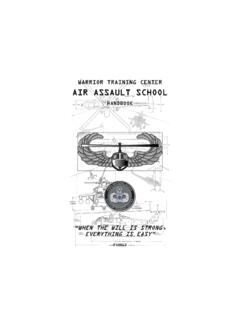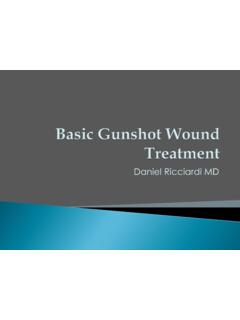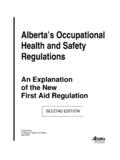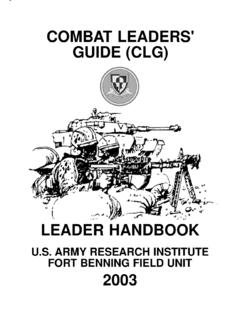Transcription of GAFPB First Aid Exam Updated - Southeast …
1 university of Missouri - Columbia German Armed Forces Proficiency Badge 2014 First Aid Exam Task: First Aid Training Conditions: Cadet has to receive CLS training/equivalent training or a written test in accordance with US regulations for CLS training. Standards: Successfully score at least 70% or higher on the written test. 1. An "urgent" or "urgent surgical" casualty should be evacuated within: A. 1 hour B. 2 hours C. 3 hours D. 4 hours 2. A casualty is being transported to a collection point using a non-medical vehicle. Which of the following terms apply? A. CASEVAC B. MEDEVAC C. Buddy Carry D. Litter Carry 3. Is the combat lifesaver considered to be a medical soldier? A. No B. Yes 4. Of the deaths that occur during ground combat, about what percent die before reaching a medical treatment facility? A. 70 percent B. 80 percent C. 90 percent D. 95 percent 5. Of the nine lines of information in a wartime evacuation request, which line is omitted if it is not applicable?
2 A. Line 6 B. Line 7 C. Line 8 D. Line 9 6. Tactical combat casualty care has three phases. Which of the following is not one of the phases? A. Care under fire B. Tactical field care C. Tactical evacuation care D. Tactical First aid 7. The MEDEVAC request format is used to request evacuation by: A. Air Ambulance B. Ground Ambulance C. Both air and ground ambulances D. None of the above 8. You are going to check the casualty to see if he is breathing. How should you position the casualty? A. On his back B. On his left side C. On his right side D. On his stomach 9. You are going to the aid of an injured soldier while under fire. What should be your First action upon reaching the soldier? A. Check the soldier for responsiveness B. Prevent shock C. Move to cover D. Request MEDEVAC 10. You are going to apply an improvised tourniquet band made from a muslin bandage. The tourniquet band should be at least ----- wide when folded.
3 A. One inch B. Two inches C. Three inches D. Four inches 11. Your Squad is under fire. You see that a Soldier has been wounded. Your platoon sergeant tells you to keep firing. As a combat lifesaver, you should; A. Keep firing B. Stop firing and treat the casualty 12. You have applied a field First aid dressing to the wound on the casualty s right leg. Wrapped the tails of the bandage around the led and tied them. Before you applied the dressing, you could feel a pulse at the casualty s right ankle. When you check the ankle again, you cannot detect a pulse. What should you do? A. Apply a tourniquet above the dressing. B. Apply a tourniquet below the dressing. C. Loosen the tails then retie them and check for a pulse again. D. Nothing, the dressing and bandages are doing their functions. 13. The wad of a pressure dressing is placed: A. Two to four inches above (proximal to) the field dressing. B. On top of the field dressing and over the wound.
4 C. Two to four inches below (distal to) the field dressing. 14. You are applying a plastic wrapper to seal an open chest wound. The casualty is unconscious. You should apply the plastic immediately after the casualty: A. Inhales B. Exhales 15. What do you do with exposed abdominal organs? A. Leave them where they are, do not touch them. B. Wrap them in dry clean material and place them on top of the abdomen (never try to put them back in). C. Nothing, wait on a medic.















